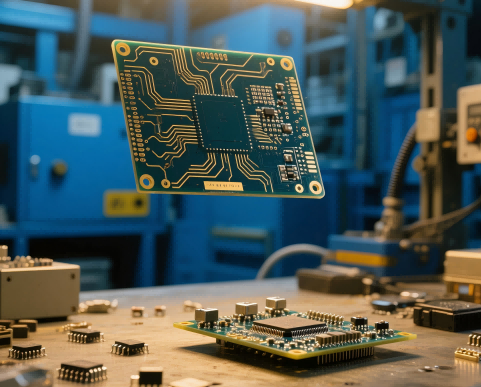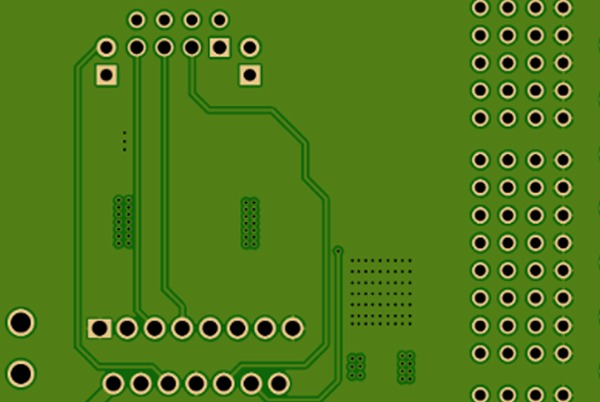What is the difference between PCB manufacturing and PCB assembly? They sound similar, but they refer to completely different stages in the production process. Understanding the differences between them is crucial. Knowing what each process involves will help you avoid delays, miscommunication, or unexpected costs.
Table of Contents
Understanding the Basics
PCB Fabrication: Making the Bare Board
PCB fabrication is the process of manufacturing the physical board, based on your design files (typically Gerber files). At this stage, no components have been mounted on the board yet. It’s all about creating the structure—the base that will later hold the components.
Key steps in PCB fabrication include:
- Etching copper traces
- Drilling holes (vias)
- Lamination of layers (for multilayer boards)
- Surface finish (HASL, ENIG, etc.)
- Silkscreen printing
PCB Assembly: Adding the Components
PCB assembly, also known as PCBA (Printed Circuit Board Assembly), is the process of soldering and mounting electronic components (like resistors, capacitors, ICs, and connectors) onto the fabricated PCB.
Key steps in PCB assembly include:
- Solder paste application
- Pick-and-place of components
- Reflow soldering (for SMDs)
- Through-hole soldering (if required)
- Inspection and testing (AOI, X-ray, functional test)
Key Differences at a Glance
| Feature | PCB Fabrication | PCB Assembly |
|---|---|---|
| Purpose | Manufactures the physical board | Places components on the board |
| Involves Components? | No | Yes |
| Required Files | Gerber files, drill files | BOM, CPL (Pick & Place), Assembly drawings |
| Common Technologies Used | CNC drilling, photolithography, etching | SMT, THT, reflow soldering |
| Timeframe | 2–7 days (typical) | 3–10 days (depending on complexity) |
| Output | Empty circuit board | Fully functional electronic board |
Why the Confusion?
Many first-time customers assume that ordering a PCB means getting a fully functional board. In reality, fabrication and assembly are two separate services, often done by different suppliers unless you choose a turnkey provider.
✅ Tip: Look for a one-stop shop that handles both fabrication and assembly to reduce handoffs and speed up delivery.
When Do You Need Fabrication vs. Assembly?
| Scenario | You Need… |
|---|---|
| Testing a new board layout | Fabrication only |
| Developing a prototype with components | Fabrication + Assembly |
| Mass production of electronics | Fabrication + Assembly |
| Sourcing bare boards for later assembly | Fabrication |
| Building DIY or hobby projects | Depends on your setup |
If you’re not sure, most PCB service providers offer both options or a combined quote. You can usually request Fabrication Only, Assembly Only, or Turnkey (Fabrication + Assembly) services.
Turnkey PCB Services: The Best of Both Worlds?
Some manufacturers offer turnkey solutions that combine manufacturing and assembly at the same location. This is an ideal option if you meet the following criteria:
- Want to save time
- Don’t want to manage multiple suppliers
- Need DFM (Design for Manufacturability) checks
- Prefer faster prototyping and fewer logistics issues
Turnkey services can also include sourcing of components, which reduces your supply chain workload.

Costs: Which One Is More Expensive?
It depends, but typically:
- Fabrication costs are lower for standard boards, especially in bulk.
- Assembly costs can be higher, especially with:
- Complex component packages (e.g., BGAs)
- Manual soldering (THT)
- Specialized inspection or testing
- Sourcing hard-to-find components
💡 Insight: Assembly lead times and cost are more volatile due to supply chain issues and part availability.
How They Work Together in the Production Flow
Let’s say you’re launching a new product or prototyping a device. Here’s how the two processes fit together:
- Design phase: Create schematics and PCB layout.
- Fabrication: Manufacture the bare board.
- Assembly: Mount and solder components.
- Testing: Ensure the board works as designed.
- Packaging/Deployment: Ship, integrate, or install.
Skipping any of these steps can result in incomplete or non-functional boards.
FAQs
1. Can I supply my components for assembly?
Yes. This is called consigned assembly. You send in the parts, and the assembler mounts them. Just make sure the parts are labeled and organized.
2. What happens if I only order fabrication?
You’ll receive bare PCBs—no components, no functionality. These are usually for visual inspection, prototyping, or preparing for later assembly.
3. Do I need to send the same files for both processes?
No. Manufacturing and assembly require different sets of files. Be sure to provide the assembler with the BOM and layout files, not just the Gerber files.
4. Is PCB assembly more expensive than fabrication?
Yes. Assembly involves additional labor, machinery, and components—so it’s generally more expensive.
Understanding the differences between PCB manufacturing and assembly can help you save time and money and avoid unnecessary detours.
If you need PCB manufacturing or assembly support, please feel free to contact us at any time!
